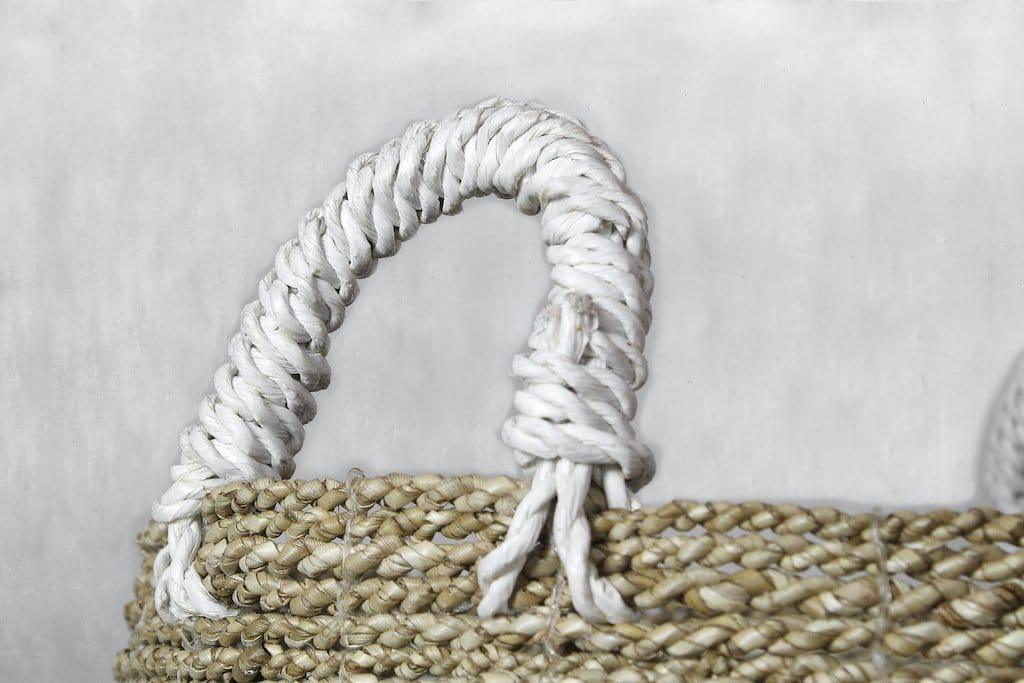Weaving baskets is a fantastic hobby and skill to have. It uses materials from nature such as reeds, water hyacinths, straw, seagrass, willow, pine, and other simple tools of the trade.
Basketry or basket weaving, as it is popularly known, is an agelong craft that has survived many years of evolution and is not intending to become obsolete anytime soon.
In many homes, baskets are used to hold or carry small or big objects, and also serve as part of the general decor. You could add personal touches to your home decor with the quaint baskets you make, or gift it to someone.
Basket weaving is sewing or weaving flexible materials into 3-dimensional items like baskets, mesh bags, mats, or furniture.
Basketry uses any material that is malleable and easy to manipulate to form any desired shape. These materials could be anything from straw, pines, willow, rattan, tree stems, water hyacinths, vines, animal hair, hide, to fine splints from woods. As long as the material is pliable, it can be used for basketry.
Do you want to know more about this ancient art that is practiced all over the world? Then keep reading to learn the basics of basket weaving.
Materials for basket weaving
Before diving into making handwoven baskets, what are the tools or materials needed to make them? The kind of basket you want to make will give you an idea of the suitable materials for it; your options are almost inexhaustible.
- Strong Scissors/sharp knife: this is used for cutting and shaping the osiers (young willow shoots) into the desired pointed shape.
- Side cutters: used for chipping off ends and awkward tufts
- Round-nosed pliers: before bending the stakes, these pliers are used to kink them out, especially if angles need to be sharp and not blunt.
- A Bodkin/strong knitting needles: a bodkin is an essential tool; it has a wooden handle with pointed metal. It is used in creating space between a woven work and for shoving a rod into position once the gap has been made. In the absence of a bodkin, a strong knitting needle can serve.
There are other useful tools like protective sheets or a waterproof cloth to work on, measuring tape, clothespin to keep your work in place if you have to postpone what you are doing.
For more refined weave work, there are unique boards made to hold your baskets at a convenient angle while you work. Also, you may need a rapping iron to push down the weaving rows. These tools could be welcome additions, especially for advanced basket weaving.
The process of making handwoven baskets
The significant parts of a basket are the base, sides, and rim. There may be other embellishments like handles, lids, ears, bows, and other decorations, but those three are very important. You can get more handwoven basket ideas or items at our basket collections.
The base. Many baskets usually start with a base, upon which the framework of the basket is raised. Traditionally, most versions begin with stakes being organized into some cross formation. You can either insert one set through another split open to enable it to hold firm. Or you can bound the cross and weave it rods to keep it firmly in place. If you are making an oval or round base, you have to establish it at this early stage by using the proper arrangement and number of stakes in the cross.
The walls/sides. The spokes jutting out from the base must be bent upwards to form the sides or walls of the basket. The upsett reeds will become the vertical elements through which you will weave the rest of the basket. For a beginner, an over-under pattern is best used until you have mastered the art of basket making, enough to try other advanced techniques.
The rim. Now to make the final part of your basket, take one of the longest reeds and fasten it around the top row of the basket. Use a cable clip or clothespin to hold it in place. Then pull the reed up and over the top row of the basket. Do this over and over again until you have worked it around the perimeter of the basket. Use glue to secure the end of the reed, or simply weave it into the basket.
In basket making, it is better to over-compensate the length of the stakes you may need because you can trim off the excess than to under-estimate it. It would be way too much trouble to add on after you are done.
Check-out our assortment of beautiful handwoven baskets here!

